Facilities Management is moving at full speed to increase our sustainability. See our efforts below.
 |
Greenhouse Gas Emissions ReportThe University of Arizona (UA), located in Tucson, Arizona, has a headcount enrollment of more than 40,000 students in more than 350 academic programs. The campus consists of 207 buildings on Main Campus located on 391 acres in central Tucson. The campus is the oldest continually maintained green space in Arizona. The UA recognizes the need to conserve its natural resources and is committed to creating a sustainable community for its students, employees and the neighboring community. |
 |
Smart Biology for the Greenest LandscapesThe University of Arizona's Facilities Management Team began working with Merlin Organics to improve soil health and reduce water usage on campus with a pilot program which started in July 2011. Based on the early success of the Bear Down Pilot Program, the project is now being expanded to encompass the entire Mall area. The objective is to have all turf at the University under 100% organic management by the end of 2012 and to become the greenest campus in the U.S. |
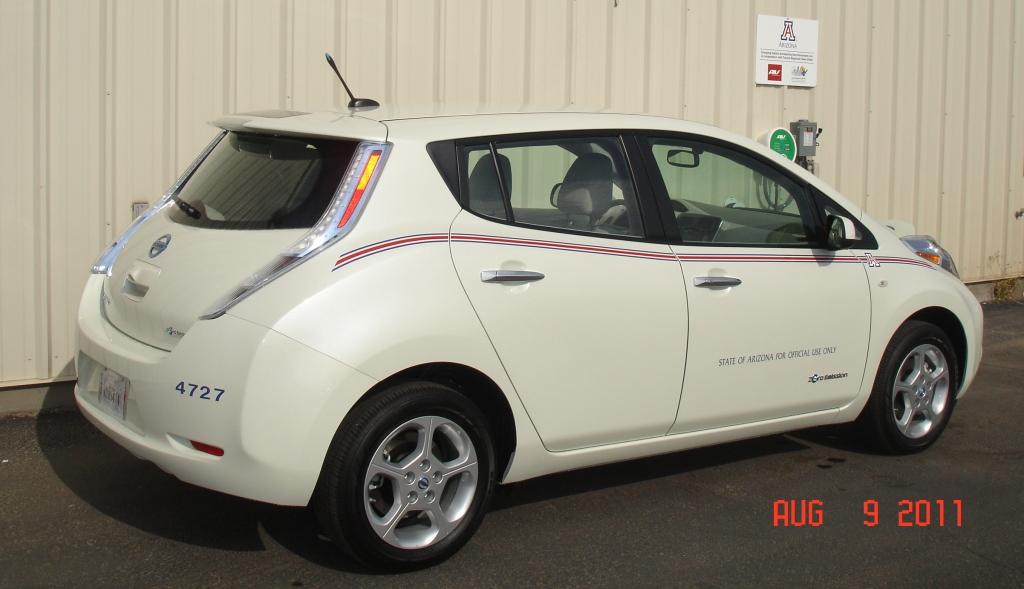 |
Nissan Leaf Electric Car RentalThe University of Arizona Facilities Management Motor Pool is excited to own the first all electric car for departments to rent while on University business. The 2011 All Electric Nissan Leaf has a range on one charge of approximately 100 miles and takes only 8 hours to fully charge. The operating cost to charge the Leaf is approximately .02 cents a mile, depending on utility rates. 60% of the interior of the Leaf is made from recycled materials including water bottles. The back of the Leaf has a small solar panel to help keep the 12 volt auxiliary battery charged. With more charging stations being installed throughout Tucson and surrounding areas, the reality of practical, all electric vehicles for campus use is moving ahead. Rent a Vehicle... |
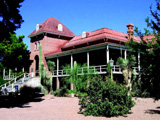 |
FM Climate Action ResponseThe University of Arizona is a leader in the study of climate change. An undergraduate and graduate academic initiative that broadly spans the colleges and departments includes internationally renowned scientists and significant contributions in numerous fields, including Geosciences, Environmental Studies, Geography, Arid Lands, and Agriculture. Education and research on issues associated with global climate change are an integral and vibrant part of the University's academic mission. |
 |
Green ComputingAt the University of Arizona, campus sustainability through the reduction of energy usage and greenhouse gas emissions has become a vital mission. An estimated 45% of the 17,000 computers on campus are left on after standard working hours. This wastes up to 3 million kWh of electricity and releases an extra 2.8 million pounds of carbon dioxide into the atmosphere a year, equivalent to the annual gas emissions from 250 cars. Just this lack of control over our computer hardware is costing the university an estimated $175,920 annually. What can you do? Just by changing a few simple actions, you can help improve energy management, increase energy efficiency, and reduce waste. |
 |
Ice, Ice BabyWhen it's hot outside, Facilities Management is busy keeping everyone on ice. FM is responsible for managing three central cooling plants that produce thousands of tons of ice and chilled water that keep the campus cool during daytime hours. It's a simple principle: Make ice at night during off-peak times when power is less expensive and then use the thermal energy of the ice to cool buildings during daytime, peak-usage periods. |
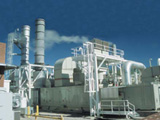 |
Steamy Turbines Bring Cleaner EnergyWhen you're supplying more than 11 million square feet of buildings with electricity, efficiency can be a steamy proposition. Facilities Management installed two gas-fired combustion turbines in 2002, along with two Heat Recovery Steam Generators, enabling the UA to lower its utility costs as well as the combined air quality emissions. Creating steam decreases boiler use, making the turbines more efficient and less costly. |
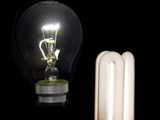
|
Watts the Deal?How long does it take to change a light bulb? When you're retrofitting an entire university campus, the answer is six years. Facilities Management began a project in the late 1990s to retrofit all lighting fixtures on campus with more energy efficient fixtures and bulbs. The switch enables the UA to save thousands of dollars a year in electricity costs and reduce cooling bills as well. |

|
Sun Power!The Visitor Center is now powered by the sun, thanks to a collaborative effort of the student organization ECOalition, Facilities Management and UA Administration. Students helped draw up plans for photovoltaic panels that were donated by Tucson Electric Power and installed by Technicians for Sustainability, making the building a model of sustainability. |
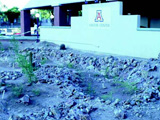 |
Harvesting H2OWhen it rains, it pours in Tucson, and teams of students, Facilities Management staff and faculty have created systems for harvesting the rain. The first major student-implemented project was conducted at the Aerospace & Mechanical Engineering Building, followed by projects at the Visitor Center, Robson Tennis Center and Cochise Residence Hall. While water harvesting at the UA dates back to the 1920s, these systems collect up to 99 percent of rainfall from roof tops, preventing street flooding during summer storms and providing a drink for parched plants. |
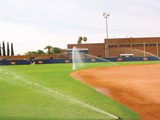
|
Natural BeautyThe UA campus has long served as a grassy oasis in the desert. But in an effort to conserve water, areas of underused or purely ornamental turf have been replaced with desert landscape. Use of drought tolerant vegetation has become a standard practice for new campus landscapes, including the Founder's Plaza at Old Main. But since UA is a designated Arboretum, a diverse collection of plants - including some that require more water - will remain |
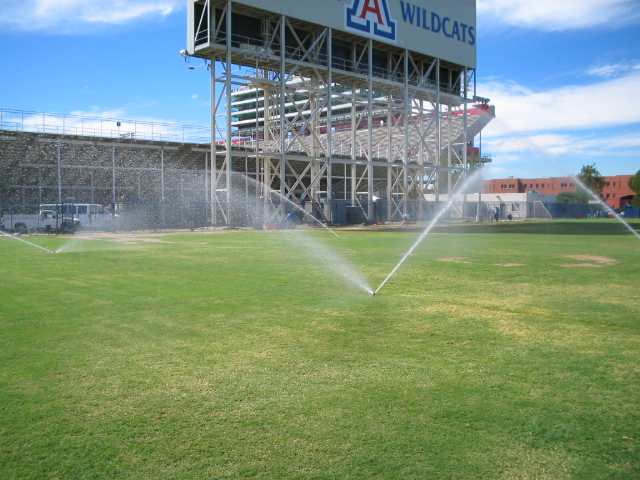 |
Field of GreenWhile the expansive, grassy mall is a favorite spot for students to relax between classes, all that turf requires water. Starting in 2003, the UA made the switch to reclaimed water for sports fields and lawns. Reclaimed water allows the campus to remain green while reducing the impact on the environment. |
 |
Reduce, Reuse, RecycleThe UA community first embraced recycling in 1989, and hasn't looked back. Recycling and Waste Management recycles about 800 tons of material every year, including paper, cardboard, aluminum cans, plastic bottles, newspapers, magazines, books and more. The department provides efficient campus recycling services while diverting as much material from the landfill as possible. |
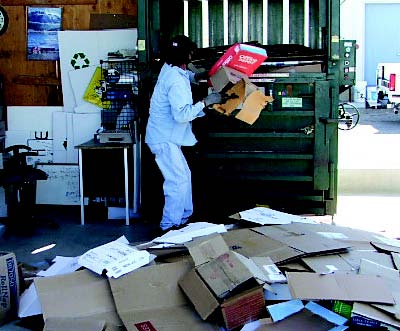
|
Recycle Mania!Don't toss that water bottle! In the spirit of friendly competition, students and staff recycled nearly 22 tons of plastic, aluminum, paper and cardboard during the 2010 Recycle Mania contest. That translates into: |
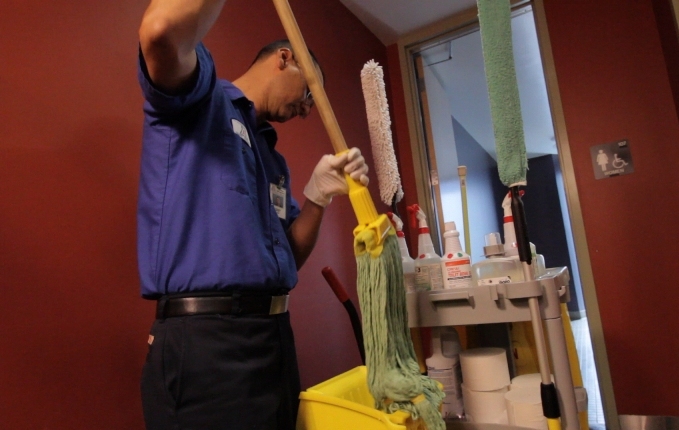 |
Green CleaningUA has gone clean and green, trading harsh chemicals for environmentally friendly cleaning products. Three-fourths of traditional cleaning supplies have been replaced with products developed for high performance, reduced environmental impact and enhanced safety. Staff has been trained in the best practices when it comes to cleaning and maintaining sustainable buildings. |
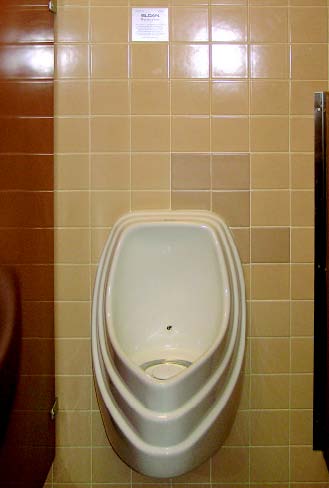 |
Keeping It FreshWaterless urinals have been effective in saving millions of gallons of water annually at UA. But one complaint: they can get pretty stinky. The Ecoblue Cube, created in Tucson, is a small, dissolvable block that when placed in a urinal, uses the power of natural bacteria to alleviate offending odor. The friendly bacteria migrate through the urinal, dissolving uric scale and keeping things fresh. |
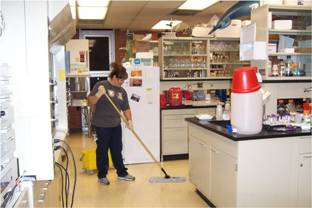 |
Tackling the Dust with MicrofiberA switch to microfiber cleaning cloths and dust mops is resulting in cleaner surfaces using fewer chemicals and less water. The super-absorbent material makes it more effective at cleaning and removing soils and contaminants, allowing staff to use just enough cleaning agents to make the campus sparkle. |
 |
Soda Pop MopA new mop made from recycled soda bottles is putting a shine to UA floors while keeping those plastic bottles out of landfills. It takes about eight soda bottles to create a large O'Dell EchoMop, and staff reports that they clean and polish far better than traditional mops. The EchoMop is longer lasting, weighs less and is more absorbent. |

|
Bring on the BambooThat isn't just any old wooden handle pushing those mops around campus. Bamboo handles are all the rage. The highly sustainable wood is harvested every 3 to 5 years instead of 10 to 20, like most soft woods. It is also among the strongest natural materials, possessing antioxidant properties that prevent bacterial growth. |
 |
Recycling on a RollWith more than 1,000 restrooms on campus, the UA uses a small mountain of paper towels and toilet paper. To reduce the impact on the environment, only paper products made from 80 percent recycled fibers are used. |
 |
Green HygieneAll campus bathrooms are making the switch to GOJO Green Certified Foam Hand Cleaner. The mild, biodegradable foam soap meets stringent standards for being environmentally responsible while still cleaning and sanitizing hands. |
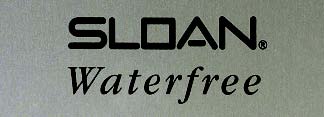 |
No Flushing NeededThe sound of the flush is disappearing on campus. In the last several years, the UA has replaced 371 standard flushing urinals with waterless urinals, saving millions of gallons of water each year. In one building alone, 13 urinals save an estimated 500,000 gallons of water per year. |
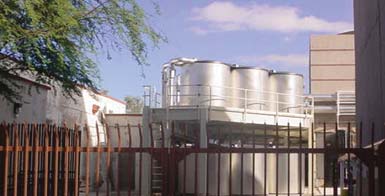 |
HVAC Takes a HolidayFacilities Management has made it a practice to shut down the heating and cooling systems of more than 160 campus buildings during holidays. The massive conservation effort began several years ago with about half as many buildings in outlying areas of the campus. Since 2007/2008, the number of affected buildings has doubled, demonstrating the UA's commitment to energy conservation, sustainability and preservation of the environment. |
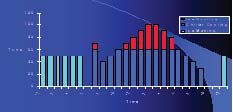
|
Chill the Electric BillA computerized heating and cooling system allows students and staff to stay comfortable while reducing energy consumption. Historically, systems would run day and night in campus buildings. Today, this smart system knows when to keep things cool and when to heat up, based on occupancy schedule. If the building is empty, no need to run the AC. |
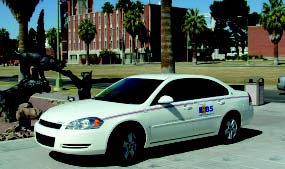
|
Green Vehicle for RentEven if it's not your favorite color, Facilities Management Motor Pool has a green vehicle for you. About one-third of university-owned vehicles run on E85 fuel (85% ethanol and 15% petroleum), which reduces greenhouse gas emissions by 37 percent, reduces carbon monoxide emissions by 35 percent, and replaces exhaust emissions with less volatile organic compounds. As the fleet is replaced, additional flex fuel vehicles are added and are available for rent by UA departments. |
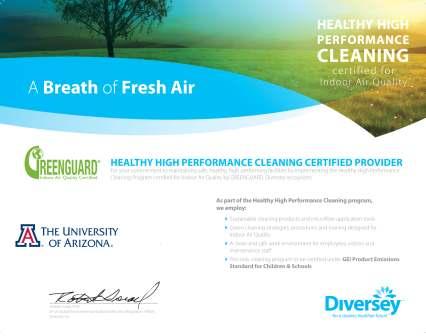
|
U of A Greenguard CertificateGreen custodial practices have earned the University of Arizona's Facilities Management Custodial Services team the Green Guard Certification, a recognition earned by only a handful of campuses nationwide. |